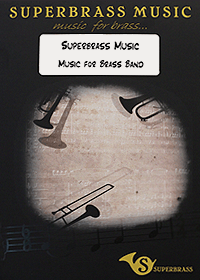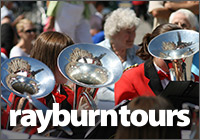Editorial ~ 2007: October
5-Oct-2007This month we give our opinion on quantity not quality, an uneasy alliance, and in praise of female conductors.
Quantity not quality?
In our retrospective postcard on the Lower Section Finals, 4BR makes the point that perhaps the time has come to bring in certain structural and cosmetic changes to give the event a sense of vibrancy that it is still missing, despite its excellent organisation.
Of them all, the process in which the number of bands that can qualify for the Finals is perhaps the one that needs to be looked at most closely. As is the case with contests all over the world, quantity rather than quality has been the historical mantra.
Some contests are all the better for accepting large number of entrants – the Nationals, (both at London and Harrogate) much like the British Open, is not one of them. At present 2 bands can qualify from any region if there is up to 16 bands taking part in the contest. This rises to 3 if there are up 17 to 24 bands, and 4 if over 25 bands taking part.
This year there was no section anywhere in the country with over 25 bands taking part, just six sections had 17 bands or more, whilst nine had 10 or less. The rest had between 11 and 16 bands.
A sign of the time perhaps, but surely it cannot now be right to allow a section of just 6 or 7 bands (as was seen in Scotland, Wales and the North of England) to send two representatives when the West of England and London & Southern Counties can only send one more when they had 23 and 22 bands respectively taking part in some of theirs?
Quantity or quality? Perhaps reducing the numbers of bands from a given region might not improve the latter, but it would surely be a better and more accurate refection of the former.
What do you think?
Send an email to: comments@4barsrest.com
An uneasy alliance
There are times when certain people must live to tolerate one another. When a grudging respect and a sense of professionalism for the activities of others can be harnessed for the benefit of the greater good. Much like the press and contest organisers.
Both parties are in it to help promote brass banding. Both get something out of it of course, but both put in far more than they can ever hope to get back out in any form of reward. There are times when strong opinion makes for strained relationships, but overall it must be said, and for the vast majority of the time, the two co-exist with a tempered sense of slightly dissonant harmony.
Without the band contests the press would have nothing to report on; without the press no one except the participants would know that a contest even exists.
The coverage the banding press now give to an event makes it all the more accessible to a wider world that enjoys and admires brass bands while not quite understanding what on earth we are really getting up to. There is a huge audience out there interested in what we do, even if at present we don’t get to see them sat on seats at your local banding contest.
Sometimes the press get it wrong, sometimes the organisers. Over the years the way in which contests are run and reported on has changed dramatically. Full results are now given out quickly, photographers bring the action of the event right onto the pages of magazines and websites for everyone to enjoy, podcasts and interviews are broadcast and screened, opinions are sought and debated. It makes the whole process much livelier and colourful, and all the more relevant.
Some contests are better than others it must be said, but in the past couple of years the vast majority of contest organisers have seen that having good press relations is a very useful tool in helping to promote a successful profile for a given event.
It has also led to that grudging respect from both parties to the way each goes about its business too. We may never be bosom buddies, but lets hope it continues for many years to come.
What do you think?
Send an email to: comments@4barsrest.com
In praise of female conductors
In these ludicrous politically correct times it was great to see another talented woman conductor making here mark at the National Championships this year.
Since more and more women (and girls for that matter) have made their way into the brass band movement it is still rather sad to report that there still seems to be (and to borrow a phrase) an institutionalised degree of antipathy towards their contribution.
Louise Hough was the third winning woman conductor since 2001 to direct a winning band in the Fourth Section and the fourth in all since the turn of the 21st century. Given just how many female players there are in banding nowadays, why is it that there are still so few conducting in the higher sections and even less appearing in the adjudicator’s boxes around the country?
It is not that they are not good, or that they don’t take banding as seriously as their make counterparts, but we suspect that there are still quite a few outdated conceptual barriers (and actual ones in some very sad cases) in place to discourage them to play a more active role.
It is one of the more shameful embarrassments of the movement that we take female participation for granted, yet do little to encourage its development further.
What do you think?
Send an email to: comments@4barsrest.com









